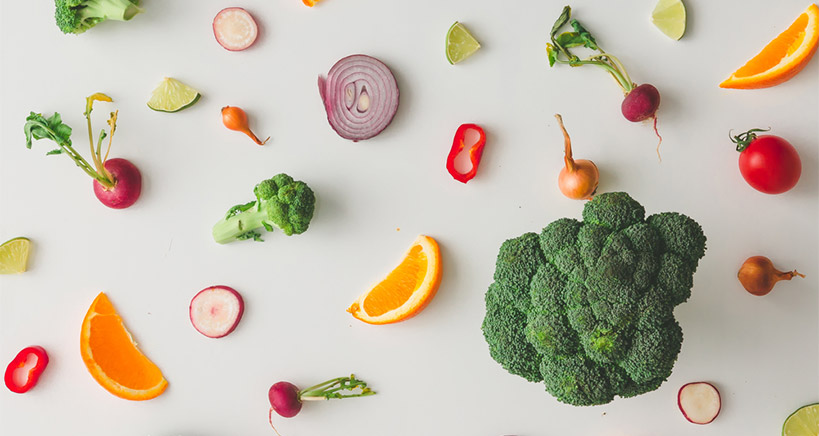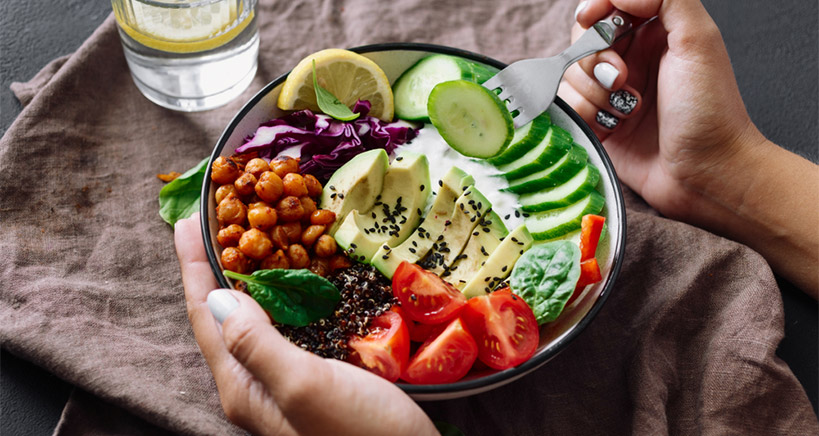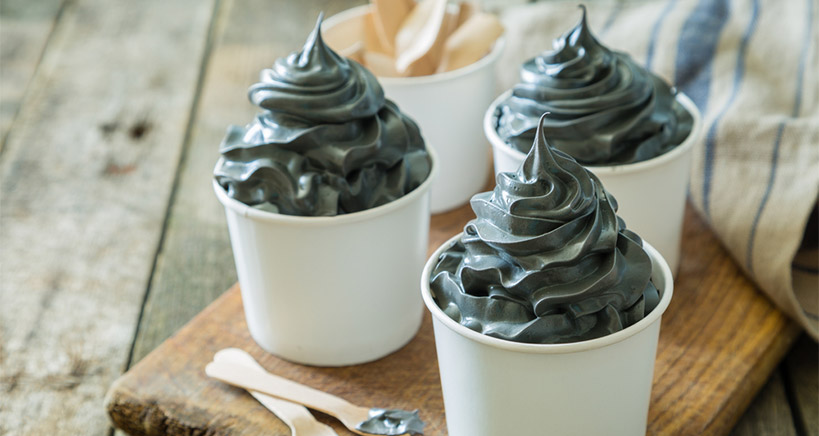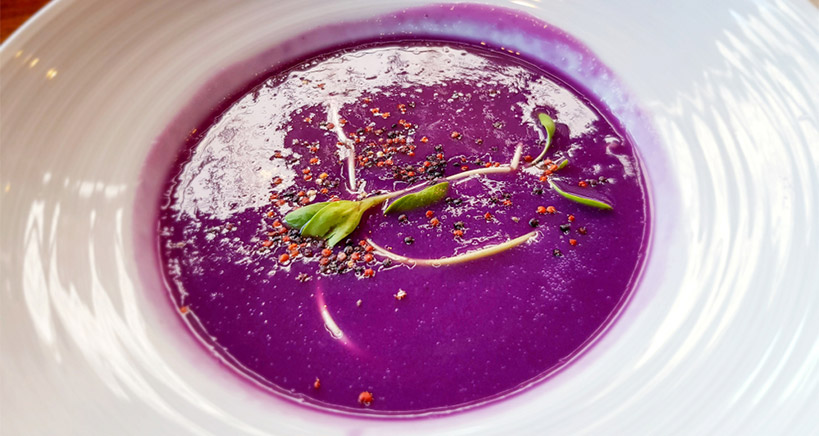
Catering Clients Crave Color
For many reasons, color is a caterer’s best friend. Colorful décor and multi-hued accessories can create a festive atmosphere that boosts enthusiasm levels even before the food arrives. Color energizes the senses and puts people in the right mood for a party. When the food comes out and it is colorful and attractive, well, you’ve captured the attention and triggered the excitement of everyone present and, after all, that’s the goal of every successful caterer.
Colorful Food Takes on New Meaning
As recently as a few years ago, rainbow food was all about health and nutrition; only recently, did “rainbows” and “unicorns” begin to mean Instagram-friendly foods that look great through the camera’s lens. Regardless of why you’re serving colorful foods, however, it looks fabulous and is attractive and appetite-whetting.
Healthy-eating advocates often tell people to “eat the rainbow.” It’s a simple way of reminding people that a variety of fruits and vegetables in one’s daily diet will afford all the vitamins and minerals people need. The concept of eating the rainbow was particularly popular a few years ago – but the legitimacy of the idea hasn’t waned since then – when dietitians, doctors, and other health advisors used the phrase to get people—especially children—to incorporate more fruits and vegetables into their diets. It’s a nice catchphrase, but behind the Madison Avenue advertising lies the science that explains why a colorful variety of fruits and vegetables can be both pleasing to the eye and good for your health.
What “Eat the Rainbow” Means
A Food Revolution Network article entitled, “Eating The Rainbow: Why Eating a Variety of Fruits and Vegetables Is Important for Optimal Health,” explains that to “eat the rainbow” is a quick way to say that the color of food can tell a lot about its nutritional value, and eating a variety of colors is one way to get as many vitamins and minerals as possible (while eating a broad range of foods in the process.) The phrase was originally aimed at parents who wanted to help their children adopt a more healthful diet; however, it caught on in the catering world as well, as healthful eating and colorful food gained traction as trends that are two sides of the same coin.

The Relationship Between Food Color and Nutritional Value
Certain colors of food indicate an abundance of specific nutrients. For example, yellow and orange fruits and vegetables (citrus fruit, squash, and so on) are full of vitamins C and A, while green fruits and vegetables (avocados, kale, spinach, asparagus, etc.) are high in vitamins K, B, and E. Beautiful purple produce (eggplant, red cabbage, grapes, and more) are high in vitamins C and K, and these are just some examples. Plants often derive their colors from different phytochemicals that can be found in them, and these compounds offer various nutrients when the fruit or vegetable is eaten. That’s the basis of “eating the rainbow.”
In addition to nutritional value, certain colors can have a profound effect on our mood. Different food colors can cause our pulse, respiratory system, and blood pressure levels to fluctuate because our brains subconsciously decide what a color will taste like before the food even touches our mouths.
So, what does this mean for your catering menu and your event’s décor? Let’s take the color red – the color of alarms and excitement – as an example. Red has an activating effect on the human psyche and it follows that, when it comes to food, red hues subconsciously signal that we should consume more. In addition, when you want to create an electrifying atmosphere and get your guests dancing and moving, use scarlet-hued décor and menu items such as tomatoes, watermelon, cherries and other fruits as stimulation. Similarly, golds, oranges, and yellows – the color of sunshine and dandelions – elicit an optimistic and happy feeling, which is just what you’re hoping your guests will feel as they approach your buffet table. From cornbread to sweet potato pie and on to salads laden with vibrant yellow and orange peppers, golden-hued foods are usually associated with comfort and these food items brighten up the room and liven the ambience.

Charcoal is the New Black
Charcoal is taking the world by storm. It’s a mainstay in beauty products, and now it can be used in foods, as well. Charcoal is being hailed for its ability to draw out toxins from the body, and it has been shown to help detoxify us from chemicals. More important – for caterers and foodies – charcoal-colored food is about as attention grabbing as you can get, and it can be used in many things, from smoothies to ice cream as well as cake and other desserts. The black tone may remind some people of licorice, and the color may not be everyone’s cup of tea, but it will surely draw attention to the charcoal-colored item, and then it’s a short road to plates and palates.
Royal and Beautiful Purple
Just a year ago, purple food was declared one of the hottest food trends in the catering world. Foods such as açaí and beets have been popular for some time, not only for their health properties, but because of that bright vibrant color they bring to dishes. Violet-hued produce such as purple cauliflower, purple asparagus, eggplant, blueberries, purple sweet potatoes and purple corn inundated the market and the produce baskets of health-conscious people everywhere, and for good reason. These foods are packed with antioxidants and anthocyanins, and the pigments that appear in red, blue and purple foods have been linked to fighting cancer, and are being credited for such health benefits as reducing inflammation, keeping a healthy heart, and keeping you looking younger for longer.

Purple Cauliflower and Sweet Potato Soup
Not only does this soup, borrowed from the Love and Olive Oil website, look gorgeous, it’s also brimming with goodness. The sweet potatoes are cooked with the purple cauliflower, which balances the sweetness of the soup and adds creaminess without needing to add cream or milk.
Ingredients
- 1 head purple cauliflower
- 2 medium purple sweet potatoes, peeled and chopped into 1 to 2 inch pieces
- 2 medium shallots, chopped (about 1/4 cup chopped)
- 1/2 medium red onion, chopped
- 1/4 cup olive oil, divided
- 6 tablespoons butter, divided
- 4-5 cups water
- 1-2 tablespoons wine vinegar
- salt and freshly ground black pepper, to taste
- snipped chives, for topping
- crème fraiche, for topping
Directions:
- Trim the cauliflower, remove stem and core. Cut 1 1/2 cups of small florets and set aside for later. Coarsely cut the rest of cauliflower into thick slices and chunks.
- Melt 2 tablespoons of butter with 2 tablespoons of the olive oil in a large saucepan set over medium low heat. Add shallot, onion, and a pinch of salt and sauté until softened, about 7-10 minutes.
- Add water and increase heat to high. Add half the cauliflower chunks and the sweet potato; bring to a boil, and reduce heat to a gentle simmer. Cook for 15 minutes.
- Add other remaining cauliflower chunks and cook for about 10 to 15 minutes more, or until cauliflower is tender and cooked through and sweet potato is fork tender.
- Melt the remaining 4 tablespoons of butter and 2 tablespoons olive oil in a pan. Add the reserved florets and cook over medium heat until browned, stirring occasionally, about 10 minutes. Transfer the florets with a slotted spoon to a small bowl; sprinkle with salt. Pour browned butter into a small bowl and set aside.
- Transfer soup into blender and puree until smooth. Return soup to the saucepan over medium-low heat until heated through. Season to taste with vinegar, salt and pepper, add additional water, if desired, for a thinner consistency. To serve, ladle into serving bowls and drizzle with crème fraiche, garnish with florets, snipped chives and freshly ground black pepper, as desired.
Keep Color Natural
Today, Instagram has put rainbow food back on the map, but it’s really just a techno-centric twist on the slightly older trend of enhancing one’s diet with colorful fruits and vegetables, a.k.a. rainbow foods. Now, colorful food is also referred to as unicorn food or galaxy food, and these colorful items – toasts, shakes, coffees, etc. – are garishly hued to make the biggest splash on Instagram. However, while rainbow-hued foods are eye-catching, the colors can be off-putting in foods that aren’t meant to be purple or turquoise, especially if artificial coloring is being used. Your clients may ask for unicorn food – especially when they are planning a party for children or young adults, and the customer is always right, of course. However, if you want a burst of color at your next catered event, in a healthy and fresh way, turn to natural foods, like the produce items mentioned above, to add just the colors you’re looking for.